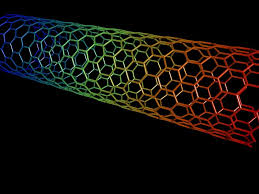Direct Heat Substrate - Modified Chemical Bath Deposition System for Growth of Ultra Long Zinc Oxide (ZnO) Nanorods and Process for Fabrication of a Nano-Size Junction LED

Fabricating ultralong zinc oxide (ZnO) nanorod arrays with a high aspect ratio remains a significant challenge when using low-temperature methods. While high-temperature techniques and complex instruments can achieve this, they require more energy and are costly. Furthermore, the development of nano-scale junctions between materials such as ZnO and gallium nitride (GaN) for electronic devices is still difficult to achieve using conventional low-temperature growth methods. Specifically, producing ultralong ZnO nanorod arrays without a seed layer using techniques like chemical bath deposition (CBD) continues to be a complex and unresolved issue.
This project offers a new low-temperature method to grow ultralong ZnO nanorod (NR) arrays without using a seed layer. It uses a Direct Heating System (DHS) where only the backside of the substrate is heated. The heat passes through the substrate and into the solution, allowing nanomaterials to grow on the surface without heating the whole solution. This method also allows the creation of nano-sized junctions between materials like ZnO and GaN, which is normally hard to do at low temperatures. It can be used with other materials such as TiO₂, CuO, and V₂O₅ to make devices like diodes, sensors, and photodetectors. An industrial system has already been developed to apply this method on full wafers. The system can also be upgraded by using a laser (pulsed or continuous wave) instead of a traditional heater to focus heat on small areas, allowing precise growth of ultralong nanorods where needed. This makes the process cheaper, more efficient, and suitable for a wide range of applications.
The innovation of this project is a new way to grow ultralong ZnO nanorods at low temperatures without using a seed layer. It uses a Direct Heating System (DHS) that heats only the back of the substrate, allowing heat to slowly pass through and support nanorod growth without needing to heat the whole solution. This method makes it possible to create tiny junctions between materials like ZnO and GaN, which is normally hard with low-temperature processes. It can also be used with other materials such as TiO₂, CuO, and V₂O₅ to make devices like sensors, photodetectors, and diodes. Another key innovation is replacing the usual heater with a laser (pulsed or continuous) to heat very small, selected areas of the substrate. This allows precise growth where needed and makes the method more energy-efficient, cost-effective, and suitable for industrial use.


